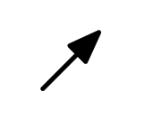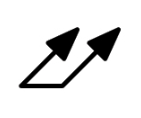Runout is an important term in GD&T for circular parts, what is runout and how total runout tolerance applied? The article also shows how to measure or check lathe runout.

What is Runout?
Runout (Run-out) is the error of rotating mechanical system, especially the rotation direction of tool or shaft is not completely consistent with the main axis, its often applied to assembled parts with circular cross-sections, such as drill bit and segmented shafts. The lathe runout is used to control the position of the CNC turned part feature relative to its axis and limit the axis offset of two parts. Runout is dynamic, in the drilling process, it will cause the increased diameter of the hole as the drill bit rotates eccentrically. Runout tolerance is the maximum allowable runout when the associated actual feature rotates around the reference axis for one or several times.
Runout Symbol:

Runout comes in two forms: radial runout and axial runout.
– Radial run-out: is created due to the tool or part being rotated off the center, and not in line with the main axis.
– Axial run-out: is created as the tool or part being at an angle to the axis. For example, the drill chuck not hold the drill to be parallel with the axis.
What is Total Runout?
The actual part to be measured make continuous rotation around the reference axis without axial movement, and the indicator moves continuously along the ideal prime line. The difference between the maximum and minimum readings measured by the indicator in a given direction is the total runout. It’s a complex tolerance that controls the straightness, angularity, profile and other geometric variation, and usually applies to an entire surface instead of individual circular elements.
Total Runout Symbol:

How to Measure & Check Runout on a Lathe – Measuring Lathe Runout
The tools required for measuring lathe runout are a dial test indicator and a magnetic base, or other bases to hold the indicator.
1. Attach the base to one of the lathe weighs and place the tip of the indicator perpendicular to the inside wall of the morse taper.
2. Rotate the lathe by hand and watch the indicator needle.
3. Stop the rotation at the lowest reading and set the dial to “0”.
4. Rotate the lathe until the needle reads its highest.
5. Read the runout
6. Repeat this test on the outside of the shaft.
An easy method to check lathe runout:
If you have no dial indicator on hand, you can move your tool rest to within .025″ of the chuck at its center point. Then put a straight edge on the tool rest and against the chuck. Rotate the chuck, observe the motion of the straight edge and gaps between the chuck and straight edge, check it when the largest gap appears, and that is the run-out.





